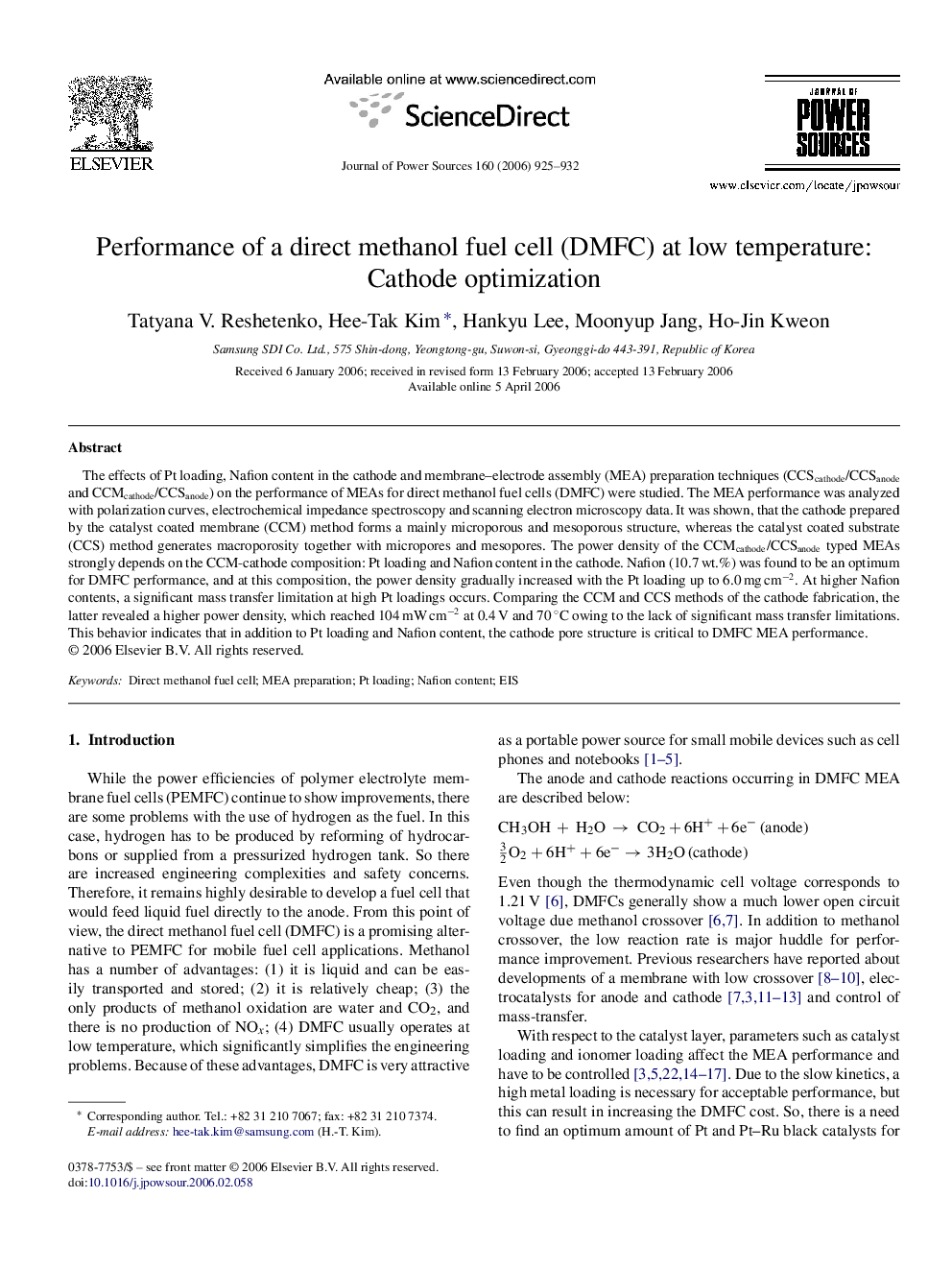| Article ID | Journal | Published Year | Pages | File Type |
|---|---|---|---|---|
| 1287147 | Journal of Power Sources | 2006 | 8 Pages |
The effects of Pt loading, Nafion content in the cathode and membrane–electrode assembly (MEA) preparation techniques (CCScathode/CCSanode and CCMcathode/CCSanode) on the performance of MEAs for direct methanol fuel cells (DMFC) were studied. The MEA performance was analyzed with polarization curves, electrochemical impedance spectroscopy and scanning electron microscopy data. It was shown, that the cathode prepared by the catalyst coated membrane (CCM) method forms a mainly microporous and mesoporous structure, whereas the catalyst coated substrate (CCS) method generates macroporosity together with micropores and mesopores. The power density of the CCMcathode/CCSanode typed MEAs strongly depends on the CCM-cathode composition: Pt loading and Nafion content in the cathode. Nafion (10.7 wt.%) was found to be an optimum for DMFC performance, and at this composition, the power density gradually increased with the Pt loading up to 6.0 mg cm−2. At higher Nafion contents, a significant mass transfer limitation at high Pt loadings occurs. Comparing the CCM and CCS methods of the cathode fabrication, the latter revealed a higher power density, which reached 104 mW cm−2 at 0.4 V and 70 °C owing to the lack of significant mass transfer limitations. This behavior indicates that in addition to Pt loading and Nafion content, the cathode pore structure is critical to DMFC MEA performance.
